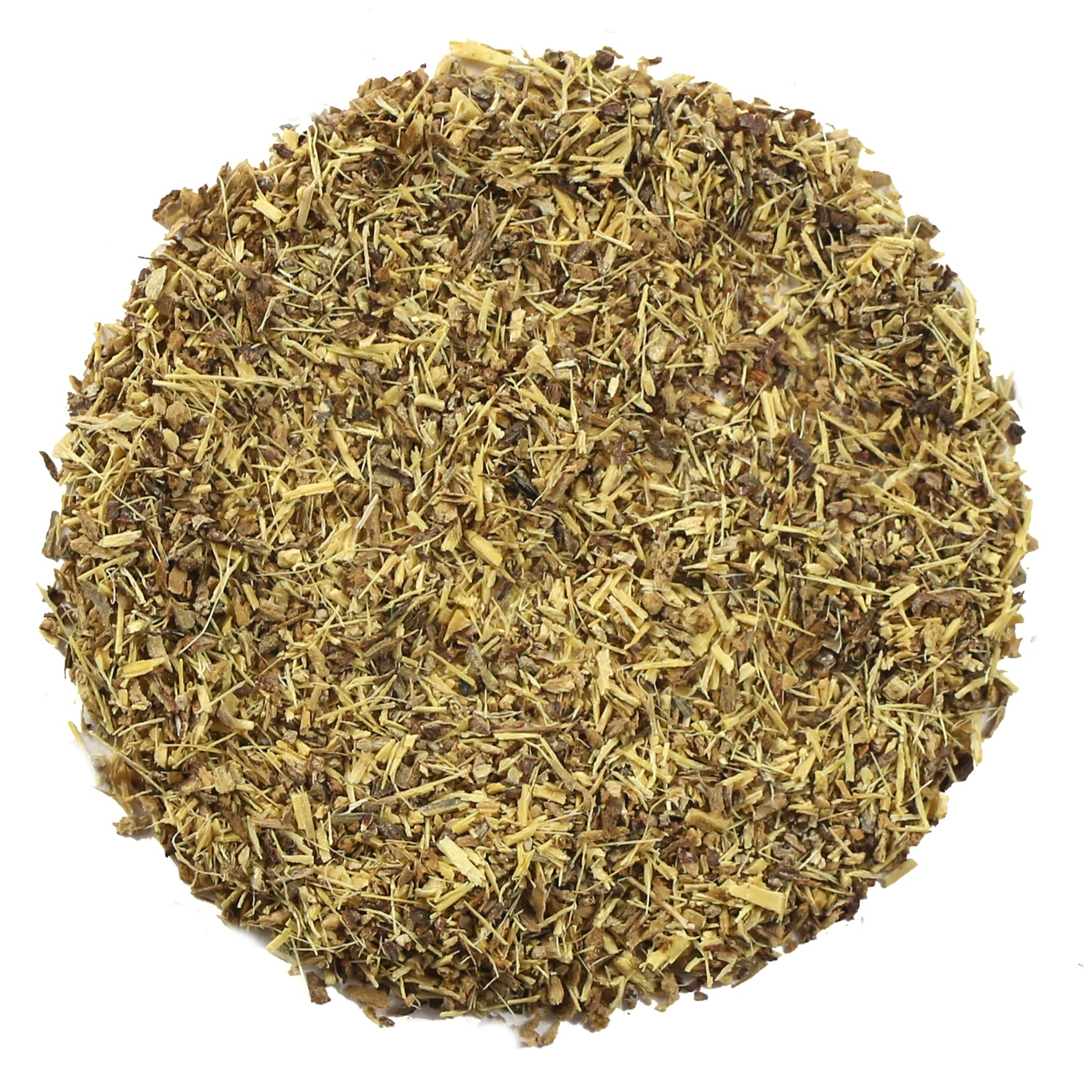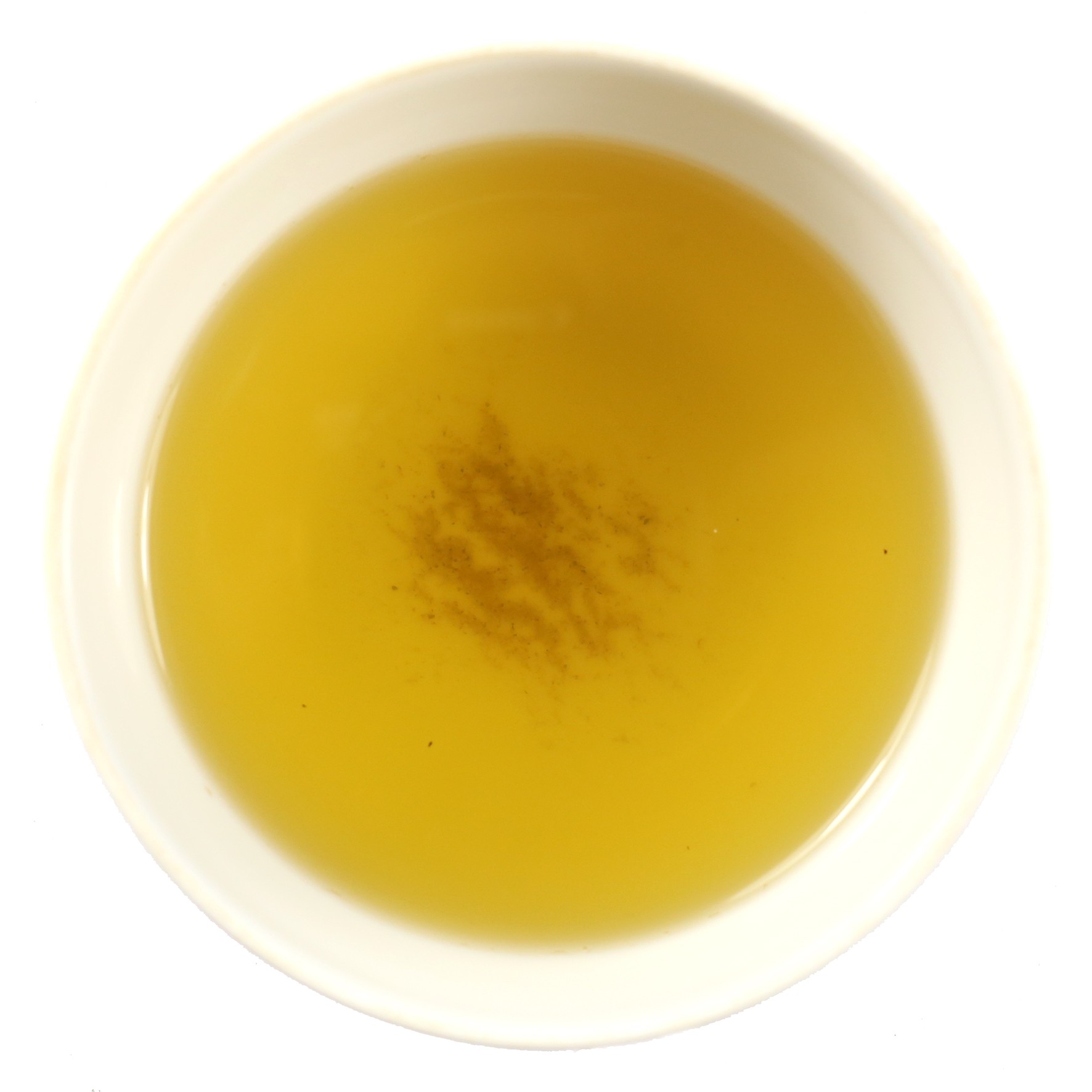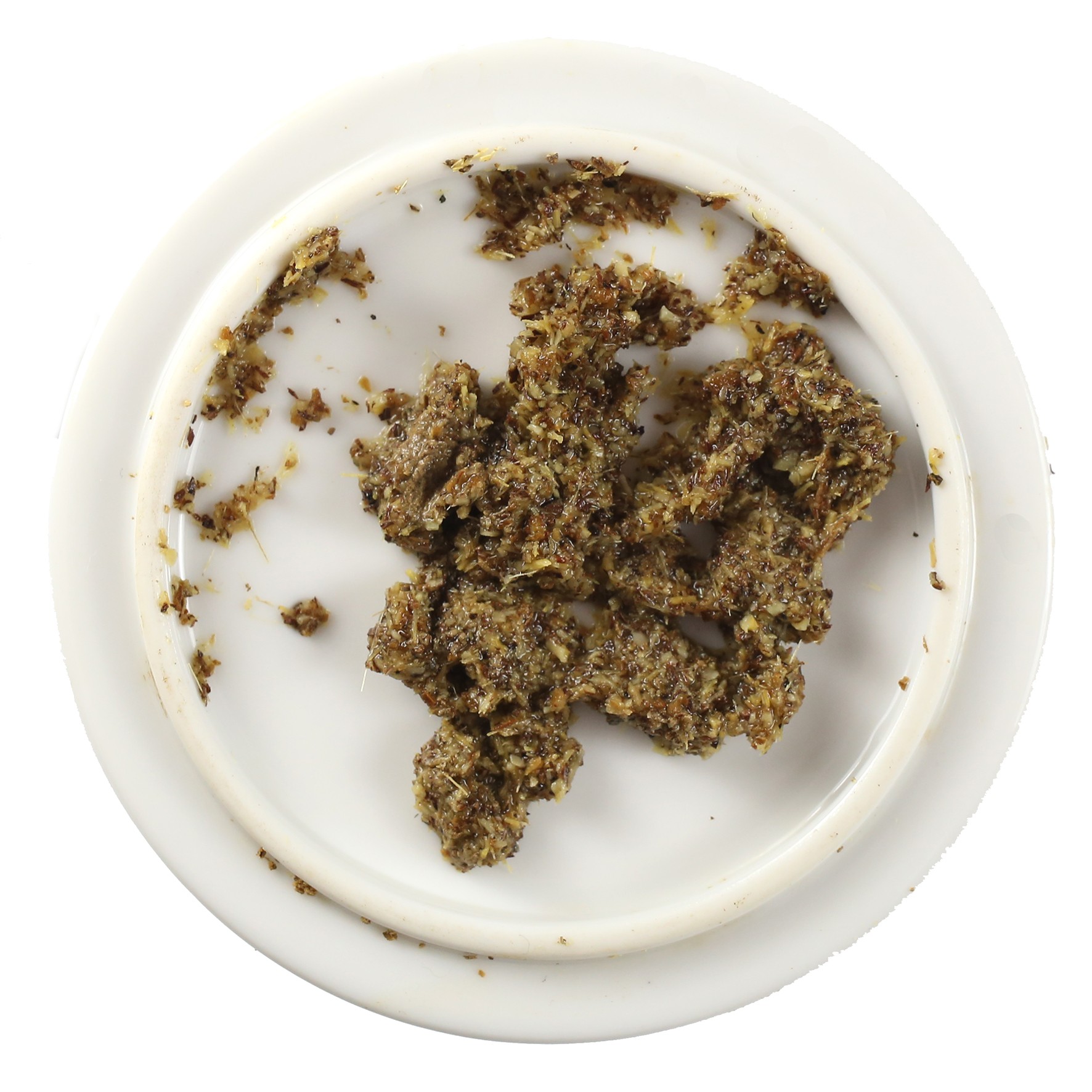Herbal Tea Brewing Guide

1 Teaspoon
Add 1 teaspoon per person and one for the pot.

95⁰c - 100⁰c
Boil using fresh water, at a temperature of 95⁰ - 100⁰c.

8 - 10 Mins
Steep for 8-10 minutes, depending on personal preference.
About Product
-
Product Description
Choosing to include Liquorice Root Cut Tea in your diet might just be the best decision you ever make for your mind, body, and soul. While this may initially sound like a bold claim, exploring the incredible health benefits of Liquorice Root Tea’s frequent consumption is almost never-ending. In the ancient practice of Ayurvedic Medicine, in particular, this herbal tea has been used to combat a wide variety of different ailments, including asthma, coughs, colds, constipation, joint pain, liver disease, low blood pressure, measles, nausea and almost countless others.
Do not think this tea’s usefulness is restricted to these centuries-old methods. In fact, modern science has since proven many of these health benefits, as well as others only recently discovered. If, however, you decide upon this beverage for taste alone, you are likewise in for a real treat to the senses. Boasting notably sweet flavours offset by tart or tangy undertones, Liquorice Root Tea is a great way to kill a sugar craving in one of the healthiest possible ways! What more could you possibly want from your morning cup of tea.
What is Liquorice Fine Cut Tea?
Also aptly known as ‘sweet root’, this tea, unsurprisingly, originates from the Liquorice plant, botanically known as Glycyrrhiza glabra. While many sweets, tobacco, and medicinal products merely use ‘liquorice flavouring’, our Liquorice Root Tea is made with only the real ingredient. The Liquorice plant belongs to the legume family, and was originally native to the Mediterranean, South-west Asia and the Indian subcontinent.
Interestingly it is classified as a ‘weed’ in all of these various locations. Similar to its relative, the legume, liquorice is a herbaceous perennial plant, and can grow up to 1 metre tall. It can be found growing in warm subtropical or tropical climates, preferring environments with plenty of sun and well-cultivated fertile moisture-retentive soil. This ensures the delicious liquorice root is of the best possible quality upon consumption
The consumption of Liquorice Root in many different forms was a popular herbal remedy within Ancient Egyptian culture. Most notably, it was found in great quantities in the tomb of the world-renowned King Tutankhamun in 1922, along with his gold, jewelry and art treasures. This indicates that Liquorice Root was of great importance within their society, and was chosen by King Tut to be taken with him on his journey into the ‘next world’. Remarkably, the liquorice root was extremely well-preserved upon its discovery. It is also known to have been an important herb in other ancient societies, including the Brahmans of India, the Hindus, Greeks, Romans, Babylonians and even the Chinese. The later of which recognised liquorice root as equally beneficial as their highly-regarded Ginseng root.Mass importation would later see liquorice root rise through the ranks to become a vital part of Chinese medicinal tradition. Dioscorides, meanwhile – the famous Greek physician who travelled with the Roman Army was said to have instructed troops to carry and chew liquorice root in order to allay thirst when water was scarce, as well as providing them with stamina and endurance during their long marches.
Incidentally, it was also Dioscorides who first established liquorice roots name as ‘sweet root’. Meanwhile, in the ‘New World’, many natives American tribes consumed liquorice root to combat a number of ailments found within their many communities. This came after its introduction into the Americas by English colonists. The Cheyenne consumed liquorice root for gastrointestinal issues such as diarrhea, while the Dakota and Pawnee tribes used it for ear and toothaches, as well as for treating minor fevers. Liquorice root was also used by the Navaho as a mild cathartic.
Liquorice Root Tea has now spread throughout the world, and continues to provide many health benefits as modern science uncovers its true potential. To find out more information on how Liquorice Root Tea can improve your everyday way of life, please see our Health Benefits section below.
Useful Information
Type of Tea: Herbal Tea.
Brewing Instructions: Brew using freshly boiled water and infuse for 5 to 10 minutes.
How to Serve: Generally speaking, most consumers consider Liquorice Root (Fine Cut) Tea to be sweet enough as it is, we recommend serving this beverage without any sweet accompaniments, such as sugar or honey. However, lemon may be considered to provide balance to the brew.
Tasting Notes: The presence of glycyrrhizin within this herbal tea – a compound thought to be about 50 times sweeter than sugar – ensures that it satisfies dessert-like cravings with every sip! With its distinctively earthy and herbaceous aroma, this brew may come as a surprise as a sweet aftertaste bursts onto the palate almost immediately after your first try. Liquorice Root Tea (Fine Cut) is also noted for the warm, pleasurable feeling that clings to your taste buds long after you have drained your cup.
Colour in Cup: Golden liquor, light in tone.
Health Benefits of Drinking This HerbFrom improving the immune system to combating depression, strengthening hair follicles to providing relief for menstrual cramps, the consumption of Liquorice Root (Fine Cut) Tea is a blessing in disguise! These health benefits are largely due to the beverage’s high content in unique organic compounds, including glycosides, flavonoids, anethole, coumarins, and sterols, as well as a number of other antioxidants and certain vitamins and minerals. It has been proven to soothe spasms, reduce inflammation, treat stomach disorders and even minimize the signs of aging.
All Liquorice Root Teas are also a diuretic, meaning they can aid with detoxifying the body. By stimulating urination, this herbal tea plays a vital part in relieving strain on the kidneys and the bladder. If, however, you are pregnant, we urge you to contact your doctor, nurse, midwife or other medical professionals before consuming Liquorice Root Tea.
It is also recommended that Liquorice Root Tea is not given to children under the weight of 3 Stone (approx 50 pounds), as it may cause potential side effects. Further to this, Liquorice Root Tea is used to treat Low Blood Pressure, but should not be used to treat High Blood Pressure, for obvious reasons. It should also be noted that more scientific studies are required before all of these potential issues can be officially confirmed.
-
Delivery Information
We offer reliable delivery services through Royal Mail to ensure that your orders reach you on time.
Here are the main points you should be aware of:
- Standard UK Delivery: £3.95 excluding delivery charge.
- Delivery Times: Orders are processed and dispatched within 2-5 working days but they may take longer during busy times. It is worth noting that all our orders are packed by hand in order to maintain the quality.
- Free Delivery: We are delighted to provide free shipping for UK orders over £35*. Moreover, customers from Europe can enjoy free shipping for any purchase above €75*. Furthermore, we offer free delivery in the USA for all purchases exceeding $125*. Please note terms and conditions may apply.
- Tracking: When your package is sent you will receive a tracking number via email so as to keep tabs of its progress.
International Shipping
We do ship worldwide meaning our products can be accessed by anyone around the world.
Here are some important details:
- Delivery Times: International deliveries vary based on destination, generally taking between 7-14 working days.
- Shipping Costs: International shipping costs are calculated at checkout based on your location and weight of your order. View full delivery charges for your location.
- Customs and Import Duties: Remember customs or import duties may exist depending on regulations in your country; these charges are borne by the customer.
Returns Policy
Your satisfaction is our top priority, however if for any reasons you’re not completely happy with your purchase, simply follow our returns procedure:
- Eligibility: Items returned within 30 days of receipt must remain unopened and in their original condition.
- Process: In order to return an item contact our customer service department using your unique order number after which detailed instructions will be given concerning returning them back to us securely.
- Refunds: Our aim is to refund you within 5-7 working days upon successful reception of returned goods. The refund amount will be credited to your original payment method.
For any other Enquiries or help please contact our Customer Support Team always at your service.
-
Product Reviews

 Loose Leaf Tea
Loose Leaf Tea Pyramids
Pyramids Tea Bags
Tea Bags Africa
Africa Assam
Assam Ceylon
Ceylon Chinese
Chinese Darjeeling
Darjeeling European
European Indian
Indian Japan
Japan Nepal
Nepal South East Asia
South East Asia Ayurveda Tea
Ayurveda Tea Black Tea
Black Tea Chai Tea
Chai Tea Flowering Tea
Flowering Tea Fruit Tisanes
Fruit Tisanes Green Tea
Green Tea Herbal Tea
Herbal Tea Matcha Tea
Matcha Tea Oolong Tea
Oolong Tea Organic Tea
Organic Tea Pu erh Tea
Pu erh Tea Rooibos Tea
Rooibos Tea White Tea
White Tea Asian Coffee
Asian Coffee Caribbean Coffee
Caribbean Coffee Central American Coffee
Central American Coffee South American Coffee
South American Coffee Coffee Blends
Coffee Blends Decaffeinated Coffee
Decaffeinated Coffee Espresso Coffee
Espresso Coffee Ethically Sourced Coffee
Ethically Sourced Coffee Flavoured Coffee
Flavoured Coffee Organic Coffee
Organic Coffee Single Origin Coffee
Single Origin Coffee Chocolate 1
Chocolate 1 Chocolate 2
Chocolate 2 Chocolate 3
Chocolate 3 Chocolate 4
Chocolate 4 Chocolate 5
Chocolate 5 Chocolate 6
Chocolate 6 Chocolate 7
Chocolate 7 Chocolate 8
Chocolate 8 Chocolate 9
Chocolate 9 Loose Tea Filters
Loose Tea Filters Tea Accessories
Tea Accessories Tea Bricks
Tea Bricks Tea Caddies
Tea Caddies Tea Caddy Spoons
Tea Caddy Spoons Tea Gift Ideas
Tea Gift Ideas Tea Infusers
Tea Infusers Tea Strainers
Tea Strainers




